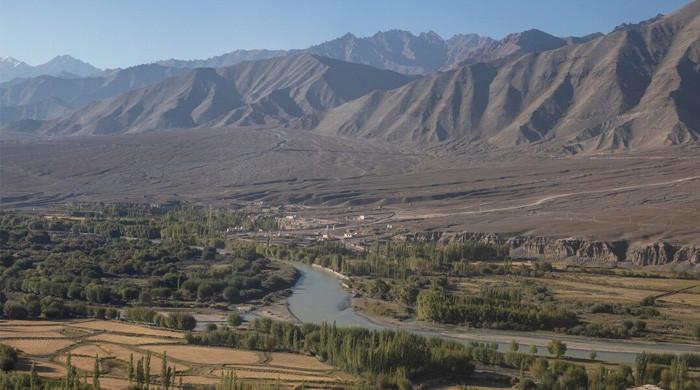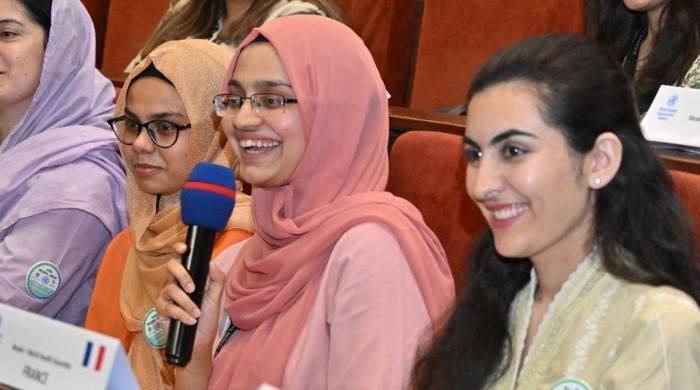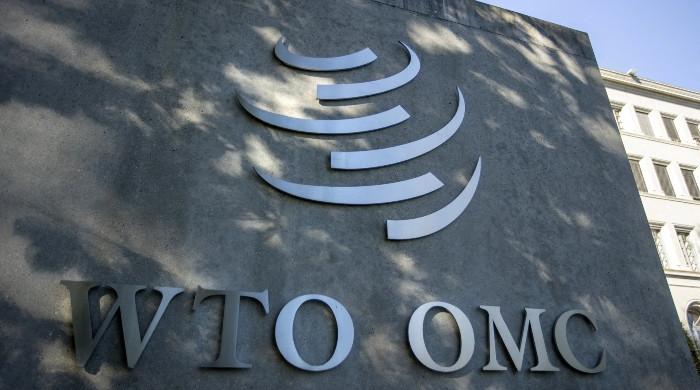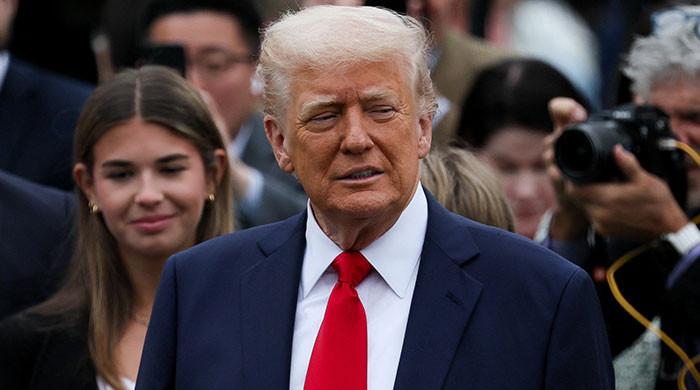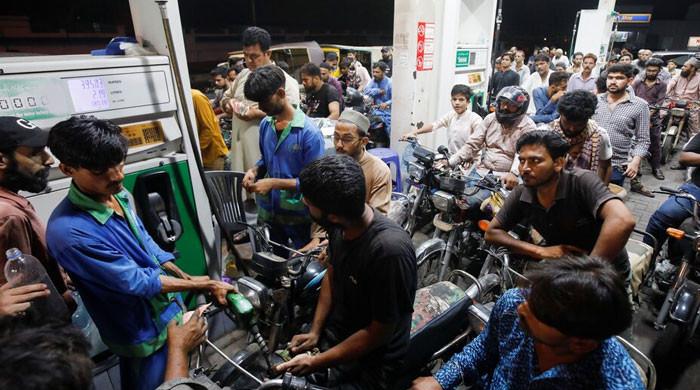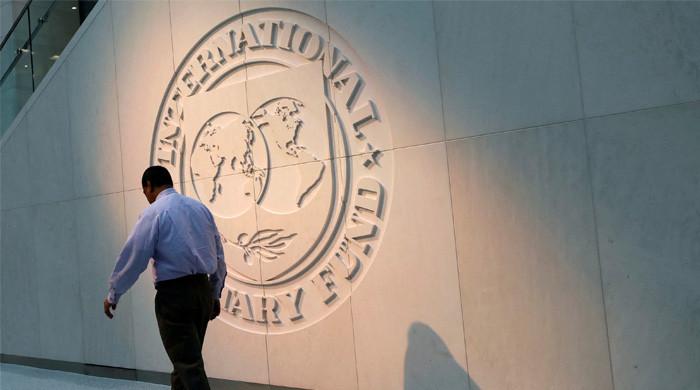Why do we hate Maryam?
Courage and bravery are seen as something only men are capable of while women are only appreciated if they are ‘mazloom’
February 29, 2024
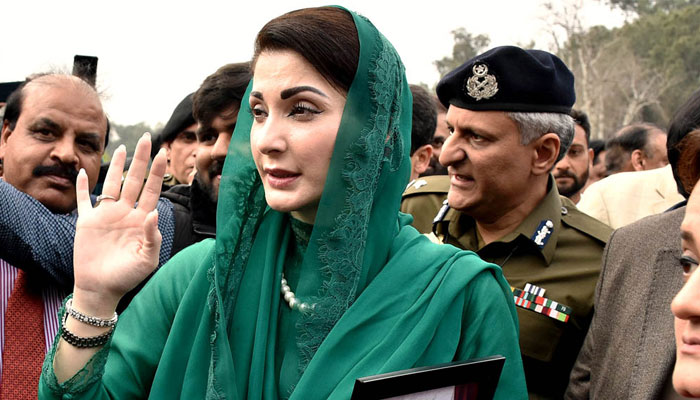
As Maryam Nawaz takes over the top slot in Punjab, many may wonder who really is Maryam Nawaz. What exactly has she done to become the chief minister of Pakistan’s most populous province? Why is she more deserving than any other PML-N leader for this coveted post? Is it only because she is Mian Nawaz Sharif’s daughter?
One answer would be that this may well be true that her rise as CM of Punjab is because of who she is. But it is also true that the hate she gets online and offline from both men and women is not just because she is Nawaz Sharif’s daughter. It seems that she gets this ‘hate’ because she is a woman and an aggressive one at that.
Why is it that she is mentioned in the vilest of ways? Is it because of her aggression and grit? Is it because she seems unfazed? Is it because of her strong language against her political opponents, especially Imran Khan? When we look at male politicians who have even worse language skills, with worse manners, and who have made it their brand that they have no respect for male and female political rivals alike, why is it that Maryam gets more flak, and they don’t? Imran Khan’s brand of politics is ridiculing his opponents but his followers like that. He is not alone in this. Look at Abid Sher Ali, Talal Chaudhry, Sheikh Rasheed Ahmed, Faisal Vawda, PTI’s new star Sher Afzal Marwat and many others whose brand of politics is their rude and dismissive and loose talk about others.
Maybe it has to do with our society’s mindset where men are appreciated for these attributes while women are demeaned and humiliated for lesser things. Courage and bravery are seen as something only men are capable of while women are only appreciated if they are ‘mazloom’ (helpless). Just look at our modern-day dramas and you will see how a woman who is helpless, silently shedding tears and not taking a stand for herself despite the unjust way she is being treated, being slapped or beaten up but still doesn’t leave a toxic relationship, is a homebody who ‘sacrifices’ everything for her family’s honour and her children is the heroine while any woman who is strong, ambitious, working, independent, wears Western clothes or is aggressive is portrayed as a ‘negative’ character.
As a society, we want women to breakdown but we don’t expect to see them stand up to bullies. A courageous woman invites hatred in many forms. An opinionated woman invites hatred. An independent woman invites hatred. We have not seen Maryam break down; we have only see her lash back at her opponents. When such a mindset is prevalent, many cannot relate to Maryam, who seems ‘strong like a man’. She speaks loudly, she lashes out at her opponents in a vicious manner, her politics is not ‘soft’. And this is why she is hated. This ‘mazloom aurat’ (helpless woman) syndrome has penetrated our society at a subconscious level.
Maryam Nawaz talks about this journey from ‘Gurriya’ [her family nickname] to Maryam that she is today. In an interview with Asma Shirazi, which was recorded on the flight when Maryam and Nawaz Sharif landed in Lahore before the 2018 elections to be arrested, Maryam talks about how she used to be meek, mild and docile but changed during the four years she spent with her father in the Prime Minister House. She talked about how her father was attacked and was a punching bag for everyone. In the same interview, she said that before they were leaving London for Lahore, Kulsoom Nawaz opened her eyes and Maryam said to her: “Ammi, see I am the same Gurriya who you said used to cry all the time. I am brave now and I don’t cry anymore.” This Maryam is the one who gets the undeserved hate.
Many have — perhaps justifiably — criticised Maryam Nawaz for her branded clothes, shoes, handbags but why is it that we don’t see the same criticism for male politicians when they wear branded shoes or expensive watches or for their luxury vehicles? Even being a beautiful woman at a certain age is a problem because ‘she is not acting out her age’ even though she is still a young woman. Maryam faces ageist attacks because she is a grandmother. Her ‘naani’ status is somehow used to attack her. Women politicians surely stand out in comparison to their male counterparts when it comes to their appearance and their overall style. While anyone has the choice to wear whatever they want to, some say that it is also about relatability with the masses — the people.
Benazir Bhutto wore simple clothes in public. The same thing can be said of her children. As politicians, it is important to be relatable to the common people despite the difference in their social standing. As a public office holder, they should not alienate the people by massive display of wealth. That said, it is also a fact that this criticism in Pakistan is mostly reserved for women politicians.
This is not to say that Maryam Nawaz shouldn’t be criticised at all. She should. Every time she does something as the CM for which she should be held accountable, there should be criticism and she should be asked questions. But hating her for the sake of hatred is unwarranted.
It has just been a few days since Maryam took charge as Punjab’s chief minister. Her first speech after being elected in the Punjab Assembly was very good with a comprehensive roadmap of how she intends to move forward as chief minister. The best part was that she made it a point to highlight how being a woman was her strength and not a weakness. Maryam Nawaz says she had to work harder than many others in her party, which is a conservative and male-dominated party. Now she will have to work harder than any other chief minister of Punjab because all eyes will be on her. It is Maryam Nawaz versus everyone.
The writer is a Lahore-based journalist. She can be reached at: [email protected]
Disclaimer: The viewpoints expressed in this piece are the writer's own and don't necessarily reflect Geo.tv's editorial policy.
Originally published in The News




